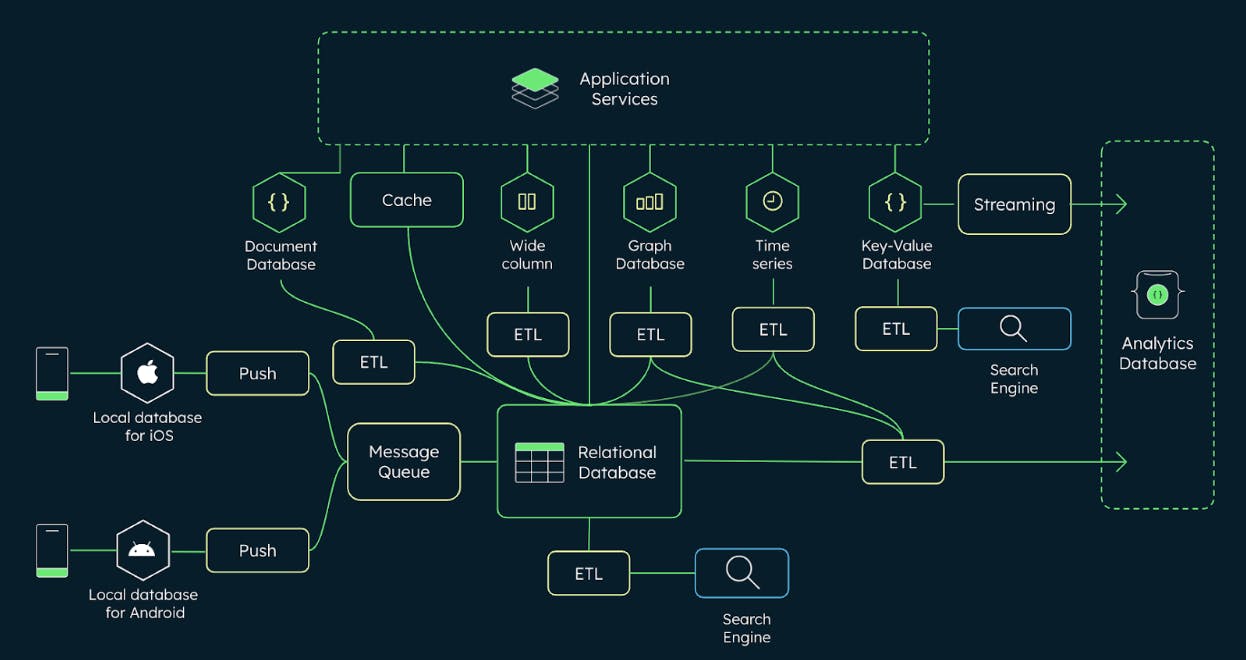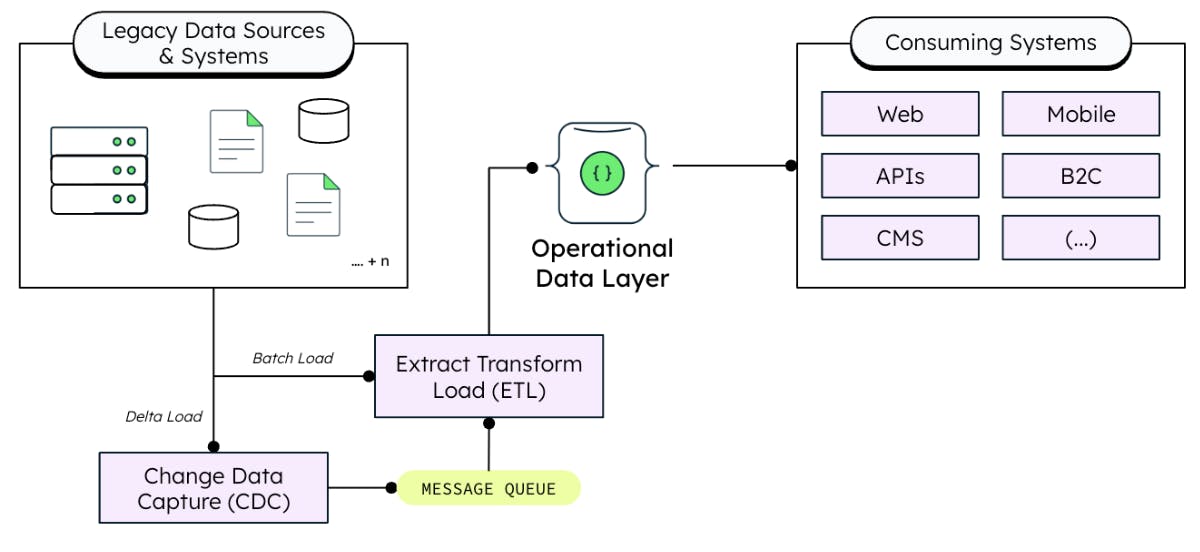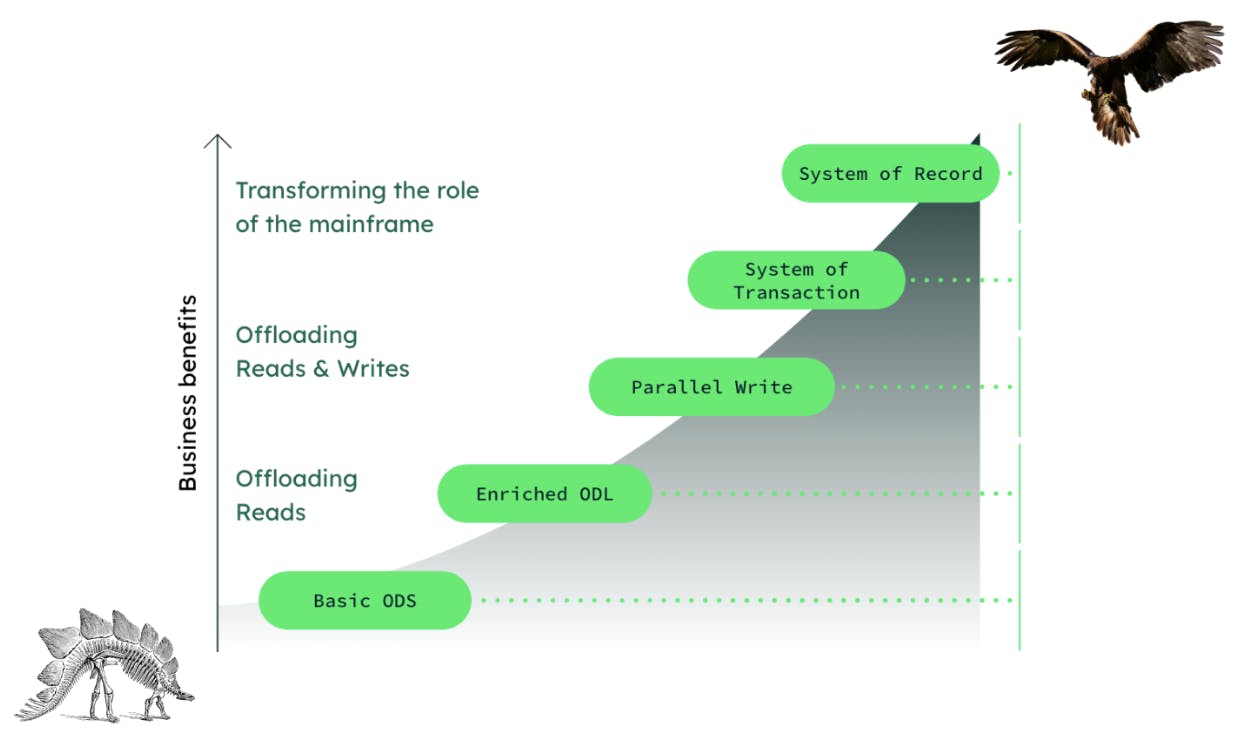Every Operational Data Layer (ODL) Can Benefit From Search
In today's digital landscape, organizations frequently encounter the daunting challenge of managing complex data architectures. Multiple systems, diverse technologies, and a variety of programming languages become entwined, making smooth operations a significant struggle. A frequent example of this issue is seen in some major banks still relying on a banking system built in the 1970s, continuing to run on a mainframe with minimal updates. The consequence is a complex architecture as seen in Figure 1, where data is scattered across various systems, creating inefficiencies and hindering seamless operations.
Offloading the data from one or more monolithic systems is a well-proven approach to increase agility and deliver new innovative services to external and internal customers. In this blog we will speak about how search can make Operational Data Layers (ODL) – an architectural pattern that centrally integrates and organizes siloed enterprise data, making it available to consuming applications – an even more powerful tool.

Operational Data Store (ODS) as a solution
To tackle the complexities of their existing data architecture, organizations have turned to Operational Data Stores (ODS). An ODS serves as a secondary data store, holding data replicated of primary transactional systems as seen in Figure 2. Organizations can feed their ODS with change data capture technologies.

The evolutionary path of adoption
Implementing an ODS requires a thoughtful approach that aligns with the organization's digital transformation journey. Typically, the adoption path consists of several stages as seen in Figure 3. Initially, organizations focus on extracting data from one system into their Operational Data Store, allowing them to operate on a more unified dataset. Gradually, they can retire legacy systems and eliminate the need for intermediate data streams. The key benefit of this incremental approach is that it delivers value (e.g. offloading mainframe operations) to the business at every step by eliminating the need for a complete overhaul and minimizing disruption.

Areas of application
ODS are used to support the business in three different ways:
Data Access Layers allow organizations to free their data from the limitations imposed by data silos and technological variations. Organizations consolidate data from different sources that often use different data storage technologies and paradigms, creating a unified view that simplifies data access and analysis. This pattern is mainly used to enable modern APIs, speed up development of new customer services, and improve responsiveness and resiliency.
Operational Data Layer (ODL): The ODL is an internal-focused layer that aids in complex processing workflows. It serves as a hub for orchestrating and managing data across various stages of processing. The ODL empowers organizations to enrich and improve data iteratively, resulting in more powerful and accurate insights. It provides a holistic view of data and process information, an improved customer experience, and reduced operational costs.
Developer ODL: Building a developer-focused ODL can provide significant advantages during the development cycle. By making data readily available to developers, organizations can accelerate the development process and gain a comprehensive understanding of their data structures. This, in turn, helps in identifying and addressing issues early on, leading to improved data models and better system performance. In a nutshell, this pattern helps reduce developer training time, streamlines development and speeds up testing and test automation.
The power of search in ODS
So how can every ODL benefit from search capabilities and how can MongoDB Atlas Search help? Atlas Search plays a crucial role in maximizing the value of an ODS. When we have questions or are searching for an answer, our natural interaction with information is primarily through search. We excel at interpreting imprecise queries and extracting relevant information from vast datasets. By incorporating search capabilities with Atlas Search into an ODS, organizations can empower their users to explore, analyze, and gain valuable insights from their data.
Consider the example of a banking organization with a complex web of interconnected systems. Searching for specific transactions or identifying patterns becomes a daunting task, especially when dealing with numeric identifiers across multiple systems. Traditionally, this involved manual effort and navigating through numerous systems. However, with a search-enabled ODS, users can quickly query the relevant data and retrieve candidate matches. This greatly streamlines the process, saves time, and enhances efficiency.
Practical examples: Leveraging ODS and Atlas Search
Let's explore a few practical examples that demonstrate the power of ODS and the Atlas Search functionality.
Operational Data Layer for Payments Processing: A financial institution implemented an ODS-based operational layer for processing payments. By aggregating data from multiple sources and leveraging search capabilities, they achieved faster and more accurate payment processing. This enabled them to investigate issues, ensure consistency, and deliver a superior customer experience.
Customer 360 View: Another organization leveraged an ODS to create a comprehensive view of their customers, empowering relationship managers and bank tellers with a holistic understanding. With search functionality, they could quickly locate customer information across various systems, saving time and improving customer service.
Post-trade Trading Platform: A global broker operating across 25 different exchanges utilized an ODS to power their post-trade trading platform. By leveraging search capabilities, they simplified the retrieval of data from various systems, leading to efficient and reliable trading operations.
Conclusion
In the dynamic world of data management, Operational Data Stores (ODS) have emerged as a crucial component for organizations seeking to streamline their data architectures. By adopting an incremental approach and leveraging search functionality such as Atlas Search, organizations can enhance data accessibility, improve operational efficiency, and drive valuable insights. The power of search within ODS lies in its ability to simplify data retrieval, accelerate development cycles, and enable users to interact with data in a more intuitive and efficient manner. By embracing these practices, organizations can unlock the true potential of their data, paving the way for a more productive and data-driven future.
For more information on Atlas Search, check out the following resources:
-
Watch this MongoDB.local talk which expands on this blog: Every ODS Needs Search: A Practical Primer Based on Client Experiences